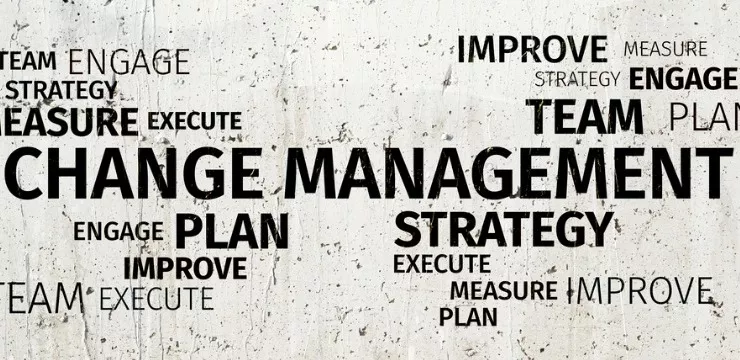
Change is one thing that’s guaranteed in this world. Can you imagine living in a fixed state where nothing evolved?
We go through so many transitions in our lifetime, in both personal and business contexts. Though you can execute change without any real strategy, when managed properly the positive implications are endless.
As an organization, if you’re wondering how you can ingrain change management to build competencies, congratulations for reaching the contemplation stage. Now you’re ready to take things a step further, with a firm vision for progressing your organization in a new direction.
Rather than adopting a narrow focus, addressing change on a case-by-case basis, organizations are continually seeking a broader change management perspective.
This can be adopted organization-wide, and helps establish a prominent culture where change is embraced as a foundation for continuous development.
This is known as Enterprise Change Management (ECM), but why exactly should you supply change management in this fashion?
Looking to Supply Change Management? Consider ECM
The ultimate goal with ECM is to make your change become the new status quo. Once it’s been embraced as part of the norm, you can finally realize the benefits of the change.
There are various tools you can use to counteract your team’s natural resistance to change, which is perhaps one of the biggest obstacles to overcome. You should expect resistance, and plan for change with safeguards in place to reduce negative impact.
With ECM, staff at all levels will develop their own personal competencies. These will resonate with their daily approach to change, which of course will differ depending on which angle you observe things from.
What’s most important is you receive full sponsorship from all stakeholders, from frontline staff to executives. Though you might be an advocate for change, if no one else is your procedure will fall flat.
As part of your strategy, you should always supply change management with a value proposition, to encourage and motivate staff to embrace your philosophy.
Now you have a base understanding of what ECM involves, let’s take a step further and look at why you should supply change management.
Successful Change
One of the biggest reasons for enterprise change management is to deliver successful outcomes. Change must be managed to deliver value with the projects you’re investing in. Only when you manage change can you achieve your business goals, with a strategy that puts people first.
With change management you can maximize your ROI, speeding up the execution of new initiatives. By demonstrating the real benefits of change, you’ll prioritize faster, more competent actions, which ultimately result in less wear on your team.
To ensure you’re on route to achieve your intended outcomes, you should implement measures to track success. This will help you deliver projects with better efficiency, lower costs, and at a higher rate of user adoption.
If it’s successful change you’re after, utilize one of these top tools.
Address the Costs Involved
Poorly managed change can end up costing your organization more than expected. This can be avoided with a proactive approach, which you’re incentivized to implement when you’re not receiving the ROI you anticipate.
This often occurs when there is an adamant non-compliance with change for behavioral reasons, which ultimately leads to companies rethinking their strategy to mitigate risk. Of course, the cost of failed management is relatively high, but making mistakes isn’t always the worst thing you can do.
The most important thing is you learn from your mistakes, and use them to analyze your current position. Money is commonly wasted when staff don’t really understand why change is necessary, or can even grasp the change itself. This is a recipe for disaster, especially considering the delusion and disillusion created as a result.
This is a simple issue that can be resolved when you create a two-way conversational dialogue. This gives staff a view into strategy, and an opportunity to get involved too.
Organizations can waste too long fixing problems associated with mis-managing change. Though there will always be unpredictably, you can avoid this by making a concerted effort to understand the ROI for your efforts.
Handle the Volume of Change
As previously established, change is constant, so we need strategies in place which are readily adaptable to changing circumstances.
To supply change management effectively you’ll need to adopt a consistent approach, to balance transformational change at every level. Everyone affected by change needs to understand the approach, and how to deal with the obstacles that come their way.
The demand for change can sometimes override its effectiveness, but it’s important to allocate the resources you need to be successful. Though this might seem counterintuitive in the short-term, when considering long-term productivity you’ll be onto a winner.
Major change is inevitable, so to handle the sheer volume of change you must adjust the mindset of your team. Break down the barriers to change which evoke emotions like fear, confusion, and resistance, and instead promote positivity and optimism from the top-down.To maintain long-term sponsorship, you can engage staff with fun activities like these.
WalkMe Team
WalkMe spearheaded the Digital Adoption Platform (DAP) for associations to use the maximum capacity of their advanced resources. Utilizing man-made consciousness, AI, and context-oriented direction, WalkMe adds a powerful UI layer to raise the computerized proficiency, everything being equal.



